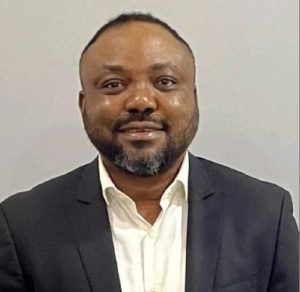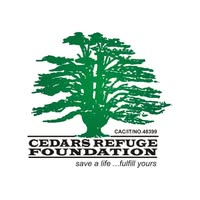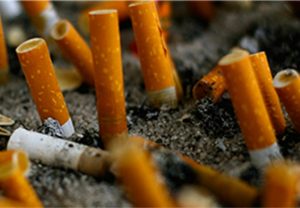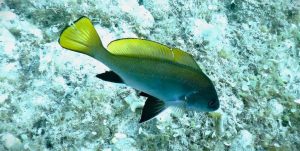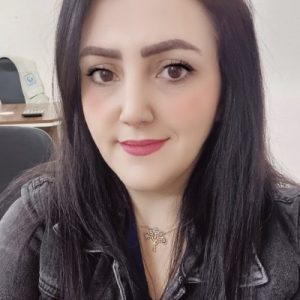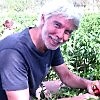IN A NUTSHELL Author's Note...The World Health Organization (WHO) has warned that Africa will see the highest increase in tobacco use globally by 2030, unless urgent measures are taken (WHO Global Tobacco Report, 2023). It’s not hard to see why. While other regions are taxing, regulating, and restricting, here in Africa, cigarettes are still cheap, advertisements still sneak through the cracks, and flavored tobacco products are still sold near school gates... ...A report by Vital Strategies and the Tobacco Atlas notes that Africa is home to the world’s youngest population, and tobacco companies are zeroing in—viewing youth not as lives to protect, but as profits to extract (Tobacco Atlas, 2023). This is not just marketing. It’s manipulation...
Tobacco Control | Policy Strategist | Advocacy | Global Health| Public Health Champion Executive Director, Cedars Refuge Foundation | Abuja, Nigeria
+234(0)803-291-2097
Stick by Stick, Big Tobacco Is Killing Africa’s Future
A Continental Call to Conscience
I grew up in Lagos, Nigeria’s heartbeat—where chaos meets rhythm and survival is a daily dance. Our home was close to Oyingbo Market, just a stone’s throw from the rattling bridges that spiral endlessly above the city: Carter Bridge, Eko Bridge, and the iconic Third Mainland Bridge, casting shadows over the rusted roofs of crowded tenements and the tangled mesh of roadside stalls.
In those streets, life never paused. Hawkers yelled prices through traffic. Danfo buses puffed smoke into the sky. And beneath the flyovers, boys no older than twelve would pass around sticks of cheap cigarettes, their fingers stained, their lungs already lost to smoke they barely understood. Tobacco was everywhere—sold in sachets next to groundnut, suya, and recharge cards. No one questioned it. It was cheap. It was normal. It was deadly.
Now, years later, I look back and realize that what we thought was harmless was, in fact, systematic harm—imported and expanded by Big Tobacco. A silent epidemic is creeping through African streets, stick by stick, breath by breath.
Africa: Big Tobacco’s Final Battlefield
Across the continent, tobacco giants have found a fresh frontier. With markets tightening in Europe and the Americas, Africa’s young population, weak regulations, and fast- growing economies offer the perfect storm for expansion. We are not just being targeted—we are being hunted.
The World Health Organization (WHO) has warned that Africa will see the highest increase in tobacco use globally by 2030, unless urgent measures are taken (WHO Global Tobacco Report, 2023). It’s not hard to see why. While other regions are taxing, regulating, and restricting, here in Africa, cigarettes are still cheap, advertisements still sneak through the cracks, and flavored tobacco products are still sold near school gates.
The Youth Are the Bullseye
In the alleys of Kampala, the backstreets of Accra, the taxi parks of Lusaka, and the corners of Port Harcourt, children are being recruited—not with jobs, but with addiction. Packaged in colorful wrappers and flavored like sweets, tobacco products are increasingly marketed to bypass parental warning and lure youthful curiosity.
A report by Vital Strategies and the Tobacco Atlas notes that Africa is home to the world’s youngest population, and tobacco companies are zeroing in—viewing youth not as lives to protect, but as profits to extract (Tobacco Atlas, 2023). This is not just marketing. It’s manipulation.
Counting the Cost: Not Just in Naira or Cedis
Every stick smoked leaves a mark—not just on the lungs, but on the economy, the household, and the nation.
In rural Malawi, where children labor in tobacco farms, entire generations are exposed to green tobacco sickness before they learn how to write their names.
In Nigeria, tobacco-related illnesses claim over 17,000 lives every year, a figure expected to climb without decisive action (BMJ Global Health, 2021).
Across sub-Saharan Africa, families spend their meager income treating cancers, stroke, and heart disease, while public health systems buckle under preventable burdens.
The economic toll Is staggering. Tobacco-related illnesses reduce productivity, increase healthcare costs, and deepen poverty across generations. According to Tobacconomics, African countries lose billions annually—money that could be used for schools, hospitals, and clean water (Tobacconomics.org).
Industry Interference: Africa’s Silent Saboteur
Even as governments try to respond, Big Tobacco fights back—lobbying lawmakers, delaying policies, and packaging harm as philanthropy.
In countries like Kenya, Zambia, and Ghana, tobacco companies fund school renovations, sponsor youth empowerment programs, and pose as “partners” in health—even as their core product kills. This is the wolf in kente, the vulture cloaked in community service.
The watchdog group STOP (Stopping Tobacco Organizations and Products) has documented widespread tobacco industry interference across the continent— undermining policies, infiltrating ministries, and exploiting political gaps (ExposeTobacco.org).
A Call to African Leaders: Rise Before We Suffocate
We cannot afford passive diplomacy or timid reforms. The time for coordinated, unapologetic action is now.
Here is what Africa must do—urgently, and without compromise:
- Raise Tobacco Taxes Significantly
Make tobacco expensive. The evidence is clear: high prices reduce consumption, especially among youth and the poor.
- Ban All Advertising, Sponsorship, and Promotion
Let no billboard, social media post, or kiosk lightbox glamorize tobacco again. Enforce plain packaging.
- Implement and Enforce Smoke-Free Laws
Public spaces must protect lungs, not poison them. Cities must become smoke-free zones—markets, parks, buses, and schools included.
- Keep Big Tobacco Out of Policy
Enforce Article 5.3 of the WHO Framework Convention on Tobacco Control (FCTC). No meetings. No backdoors. No deals.
- Invest in Youth Awareness and Cessation Support
Every school should be a tobacco-free zone—not just physically, but mentally. Train health workers and fund quit programs across urban and rural clinics.
- Strengthen Regional Collaboration
Let ECOWAS, SADC, EAC, and the African Union coordinate enforcement, taxation standards, and cross-border monitoring. Africa must stand as one.
Final Word: We Know the Smoke. We Choose the Light
Africa is not Big Tobacco’s dumping ground. We are not the continent of secondhand policies or third-rate protections. From the shadows of Oyingbo to the alleys of Addis Ababa, from the banks of the Congo to the edges of Soweto, a generation is watching.
Africa must not become Big Tobacco’s last empire. We have the tools. We have the evidence. What’s missing is unified, courageous leadership. Every stick smoked is a step backward for our health, economies, and youth. The conquest of Africa by Big Tobacco is neither accidental nor benign. It is a well-funded, deliberate assault on our health, development, and sovereignty.
We have lost too many to tobacco’s deceit. Let’s not lose another.
Let this be a call to arms for all African leaders: Stand up. Speak out. Act now. The time
to protect Africa’s future is not tomorrow—it is today.
This is our breath. This is our battle. And it is time to win it—stick by stick, country by country, life by life.
References
WHO Global Tobacco Epidemic Report, 2023 https://www.who.int/publications/i/item/9789240077164
Tobacco Atlas – Vital Strategies (2023) https://tobaccoatlas.org
BMJ Global Health (2021) – Tobacco control in Africa: urgent need for greater investment https://gh.bmj.com/content/6/2/e004175
STOP Reports – Industry Interference in Africa https://exposetobacco.org
Tobacconomics Tobacco Tax Scorecard https://tobacconomics.org
